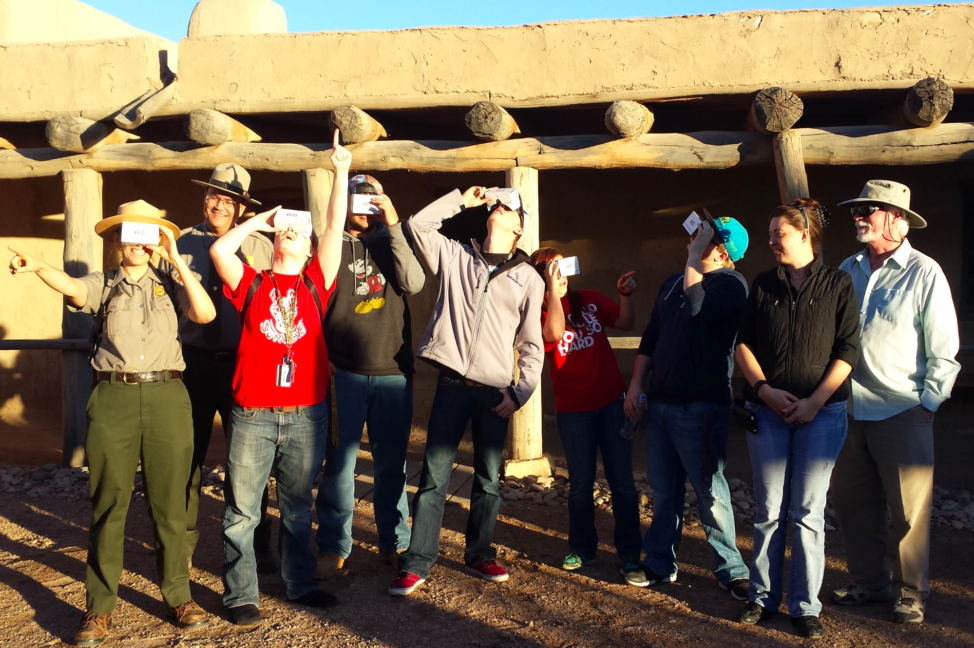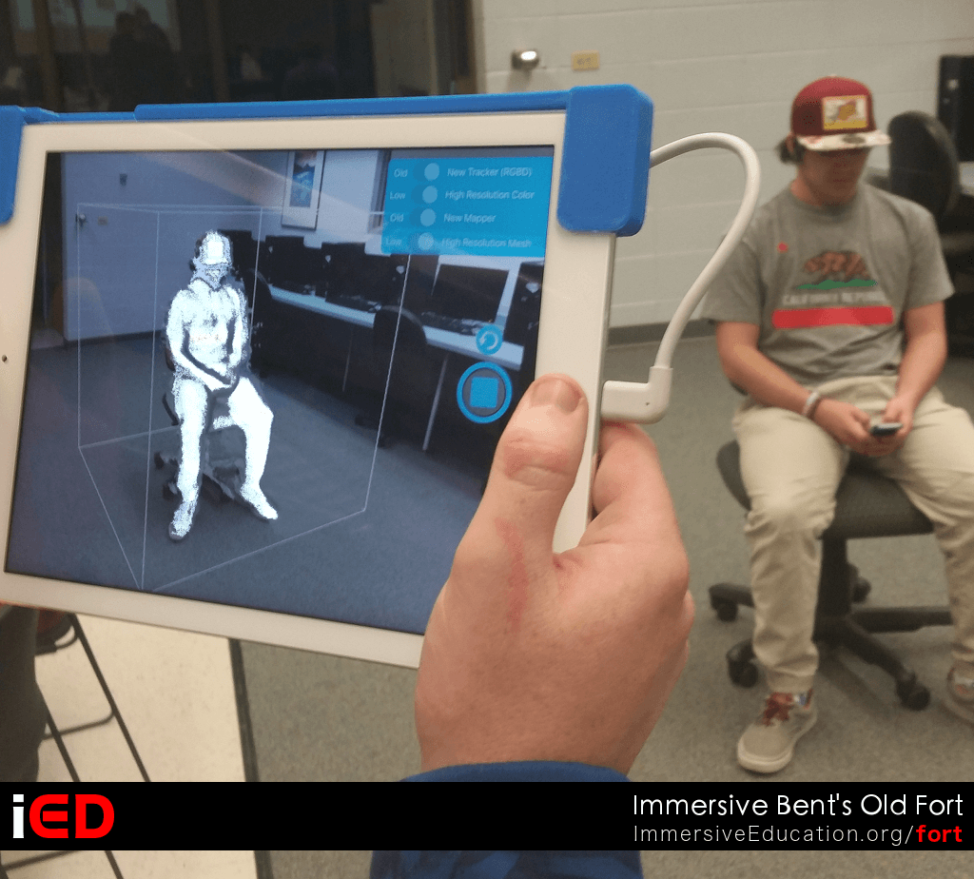
U.S. Department of the Interior (DOI) National Park Service (NPS) rangers work together with Immersive Education Club college students and high school students to recreate historic Bent’s Old Fort in Virtual Reality. (IED)
Virtual reality (VR) technologies are slowly, albeit selectively, showing up in U.S. schools as educational tools. And there are efforts to bring them to schools in developing countries as well. But given the challenges, some experts say it is too early to even consider their impact on education.
Spearheading the effort to bring virtual reality technologies to classrooms around the world is VR First, a global program that aims to provide VR labs and related headgear and hardware to interested educators and developers.
The initiative marks “a new era of immersive technologies,” said co-founder Ferhan Ozkan, similar in its adoption and transition periods to “technology waves like computer[s], internet and mobile.” But the biggest challenge, he added in an email, is creating awareness and educating developers about these technologies.
That will take time. Eventually, though, he believes “immersive technologies will be embraced worldwide,” including in developing countries.
Michael Trucano, the World Bank’s Senior Education and Technology Policy Specialist, sees potential promise in immersive technologies for education in developing regions, particularly augmented reality (AR) and mixed reality (MR). But for now, they are surrounded by “undeniable hype.”
Adoption has been slow, even in the U.S. Some schools, in partnership with nonprofits and government agencies, are just beginning to use virtual reality to recreate historical sites like Colorado’s Bent’s Old Fort, or overlay the real world with a virtual layer to teach anatomy or a foreign language.

Students at Otero Junior College in Colorado scan 3-D humans and objects for the Virtual Reality recreation of Bent’s Old Fort National Historic Site. (IED)
Part of the reason is that standards and basic design principles for educational applications still have to be figured out. One group working to define standards and best practices is the Immersive Education Initiative (IED), a nonprofit international collaboration of educators, researchers, and various public and private groups.
Any successful educational applications will have to “take advantage of and fit nicely into existing infrastructures and teaching and learning practices,” said Trucano. So far, the applications he has seen are “poor fits.”
It seems like I am pitched an idea about ‘using VR to transform learning in developing countries every other week. None has seemed to me to be particularly compelling or practical — yet – Michael Trucano
“Are there compelling VR software applications today that would enable teachers and learners in developing countries to do things that couldn’t already be done well enough using other means and at much lower price points?” he asked. “Not that I have seen. But it’s still very early.”
The interest is there, IED director Aaron Walsh told Techtonics, noting that a number of educators and organizations from India have expressed interest in learning how to use VR technologies for immersive education in their classrooms.

Bringing these technologies into the classroom can be done quickly and easily, he said, provided the infrastructure and applications already exist, which isn’t always the case in developing countries. Virtual reality experiences require high-speed networks, access to computing systems and affordable devices, all of which remain prohibitively expensive for use on a massive scale.
Prices would have to “fall precipitously” for VR applications to become “anything more than a novelty ‘extra’ for small numbers of schools in developing countries,” said Trucano.
Training will also be necessary to get the most value out of the VR experience, said Walsh. “The teacher has to be trained on how to use these technologies. And the problem a lot of teachers face is … they don’t have enough experience to realize some of the things they’re doing are ineffective and sometimes counterproductive.”
And traditional approaches and behavior also need to change – a much more difficult task than resolving software and hardware issues.
“These are all very real challenges – especially if we are talking about using VR ‘at scale’ in an education system,” added Trucano. “It is always possible to have small ‘hothouse flower’ projects, where you can ensure the necessary infrastructure is in place, and can devote resources to related teacher training and support. But to do something in a sustained way, over time, in lots of places, in a way that has a real impact — that is a much taller order.”
Given software and hardware challenges, both Walsh and Trucano believe mobile phones, increasingly in use among students in developing countries, should be the power that drives VR, AR, and MR in the long-term, provided all the other requirements are met.
“What will be really exciting,” he said, is when we can “do things with VR that weren’t possible or perhaps even conceivable using ‘old’ technologies. We’re not there yet.”
